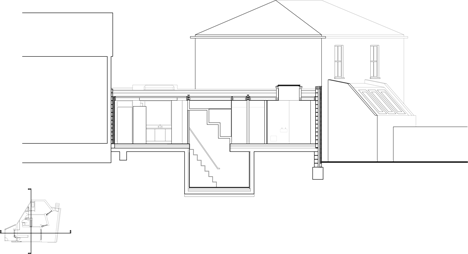Studio 54 Architecture slots a small home between two London buildings
Cedar cladding and brickwork unite the exterior and interior of this two-bedroom house that Studio 54 Architecture has squeezed between two existing properties in north London.
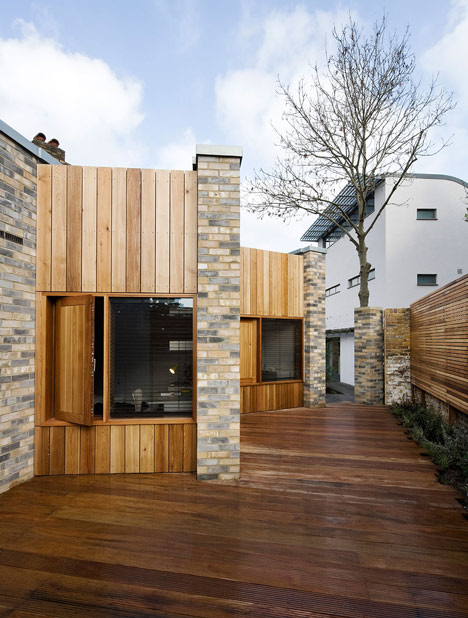
London-based Studio 54 Architecture designed the small home for an angled corner plot flanked by a terrace of Victorian houses on one side and post-war former council houses on the other.
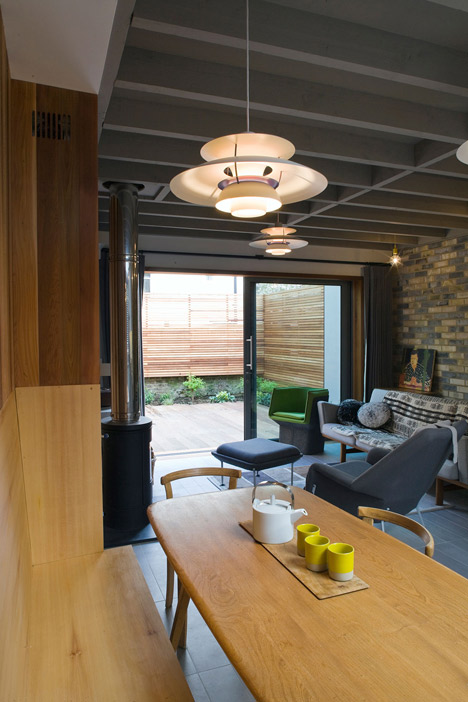
The site had previously been used as a workshop and parking space, so planning restrictions limited the new property to a single storey close to the street. This prompted the architects to design a building that fills the space between its neighbours and connects to outdoor living areas at the back.
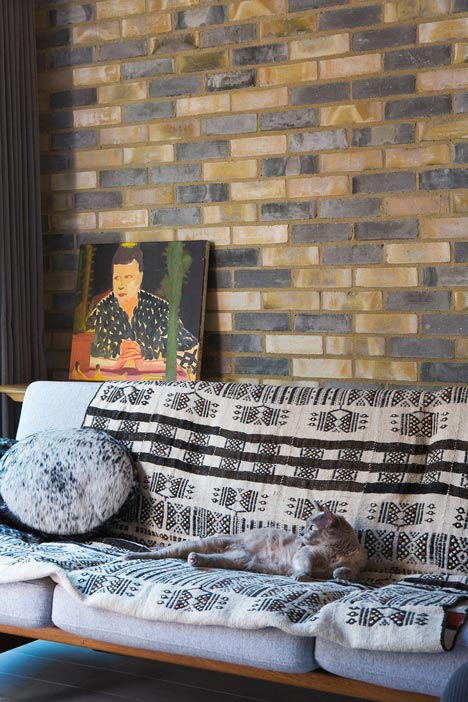
The rear of the property faces a garden and incorporates cranked walls that provide south-facing views from two bedrooms onto the outdoor decking while avoiding direct sight lines into neighbouring buildings.
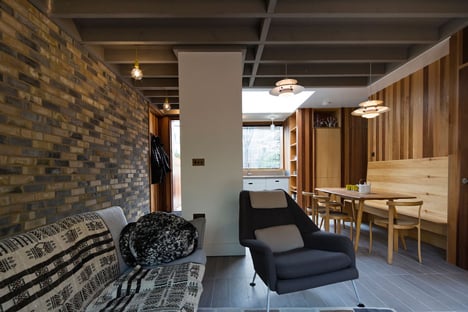
Brick masonry and cedar cladding applied on the external facades continue inside the house, which the architects said "has been deliberately and robustly crafted".
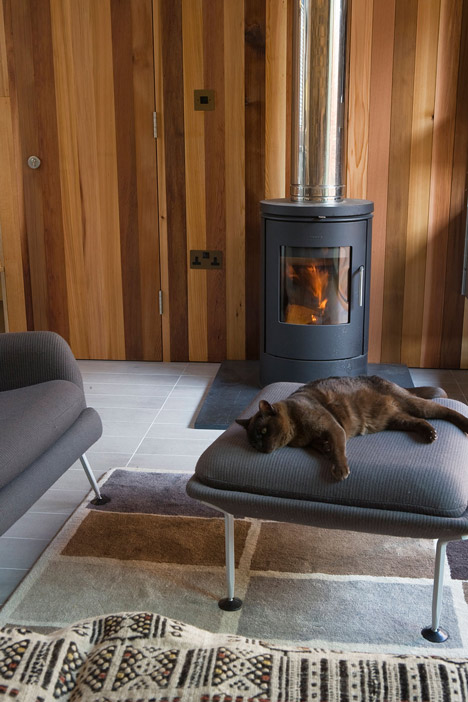
From the entrance, an exposed brick wall extends along one side of the living area towards full-height glass doors that lead out onto the decking.
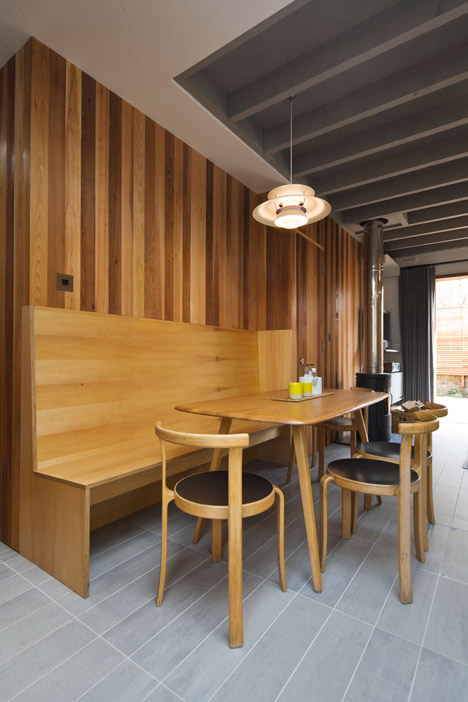
Cedar boards, matching the bespoke doors and window frames, were used to clad the opposite wall and the cabinetry around the kitchen.

A dining table and a fitted bench occupy the area between the kitchen and living room, which features a wood-burning stove as a focal point surrounded by a sofa and armchairs.
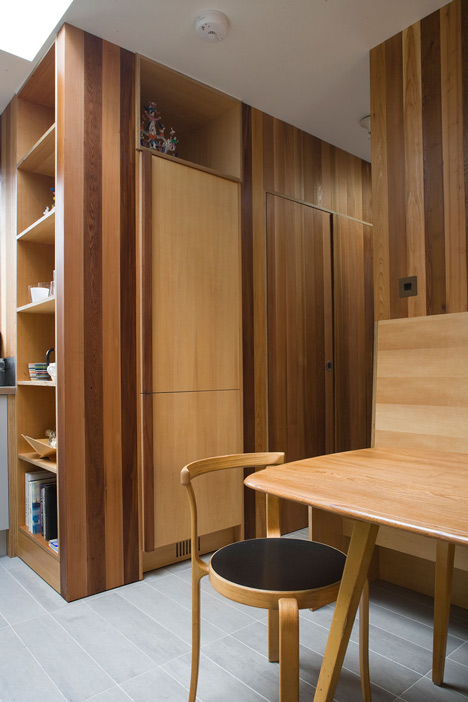
Sawn timber joists support the ceiling of the living room and have been painted grey to match the tone of brickwork in the exposed wall. The painted joists can also been seen on the ceilings of the bedrooms, where they intersect with the angled walls facing the garden.
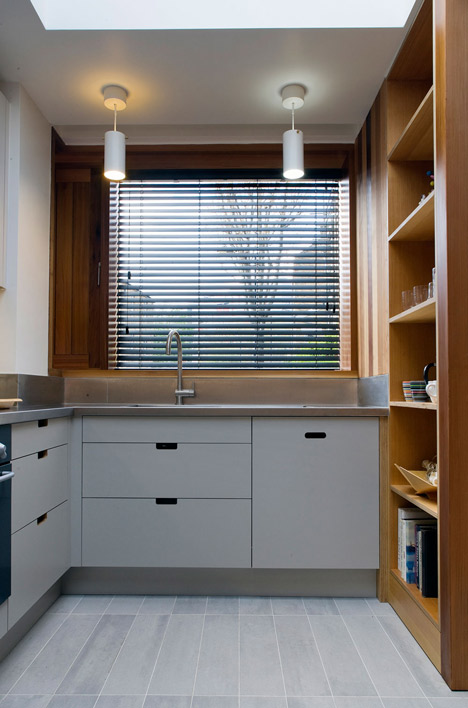
A corridor leading from the kitchen towards the bedrooms at the rear of the house receives daylight from a series of roof lights and is flanked by built-in storage and a washroom.
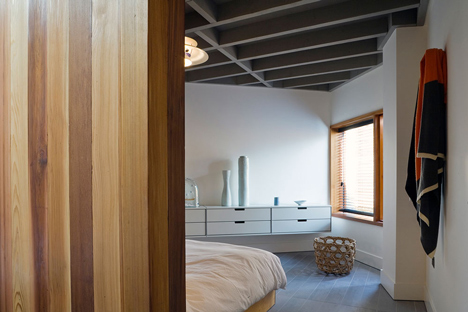
A ladder stair located behind a door between the dining area and living room provides access to a storage basement, which is lined with cedar-faced plywood.
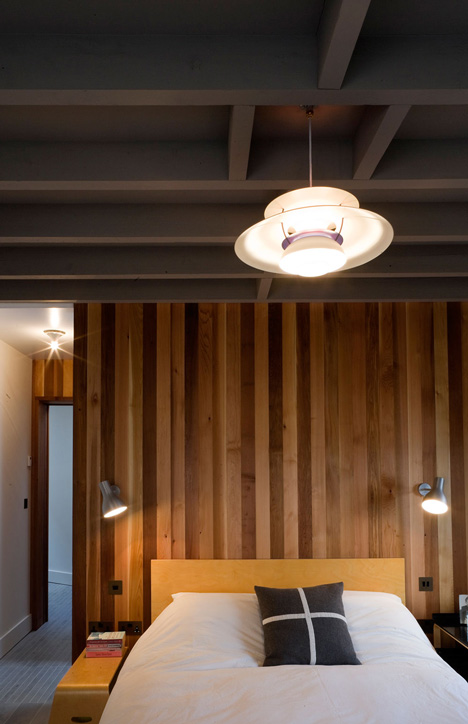
The size of the tiles used for flooring throughout the interior varies to differentiate the spaces. Underfloor heating contributes to the house's low energy usage, while the roof is covered with plants and wild flowers.
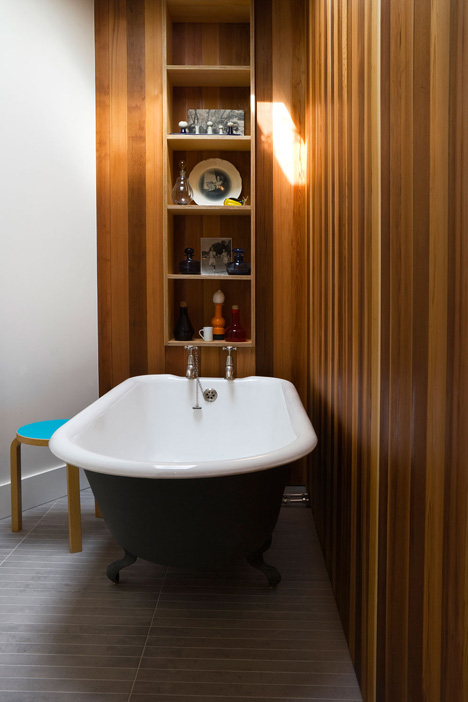
Photography is by Sarah Blee.
Here's a project description from the architects:
New House Elfort Road Islington
A new single storey 2 bedroom 'urban cabin' on a tight corner of Elfort Road: The irregular shaped site slots in-between the end of two terraces: 3 post-war ex council houses running north south and Victorian houses running east west. The site had previously been used as a car workshop and more recently for car parking.
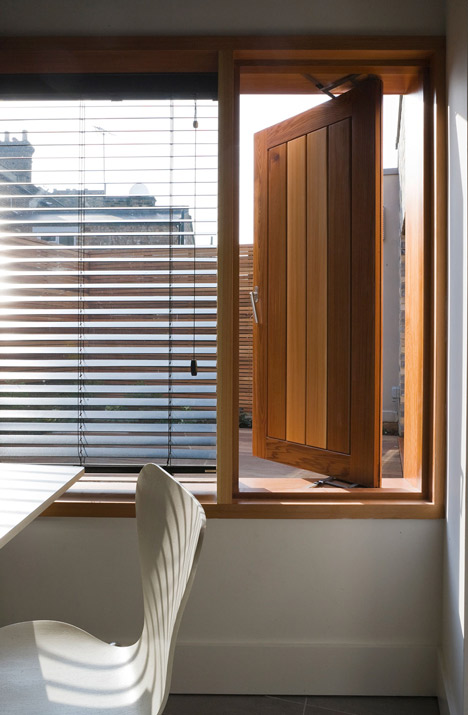
The Planners ruled out both a two storey building (because it would visually close up the gap between the terraces) and building at the back of the site (which would have involved building on an existing garden). The design solution was to build a single storey building between the flank walls of the two terraces.
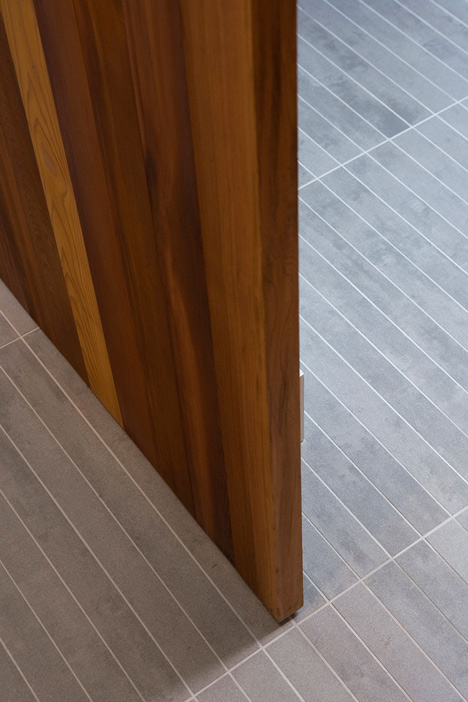
The perimeter walls to the garden have been cranked and expressed as independent planes separated by timber screen walls to allow the windows to bedrooms to face south into the gardens and to minimise overlooking into neighbouring properties.
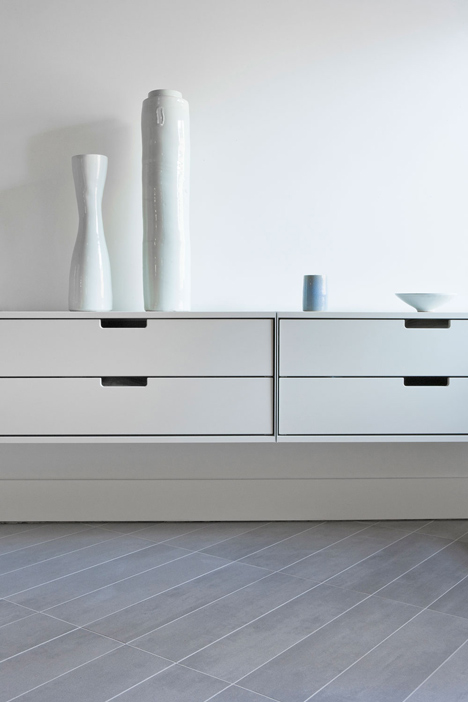
A brick path leads to the front door and into a hall with an exposed brick wall defining the internal southern boundary to the house. The accommodation is arranged with the kitchen/dining/living area facing the street at the front and the decked garden to the rear. Bedrooms and bathrooms are linked by an internal corridor naturally lit with a series of large roof lights. The floors are tiled throughout; the size of the tiles changing to create a varied rhythm moving between spaces. Heating is under floor and a wood burning stove acts as a focal point for the living area.
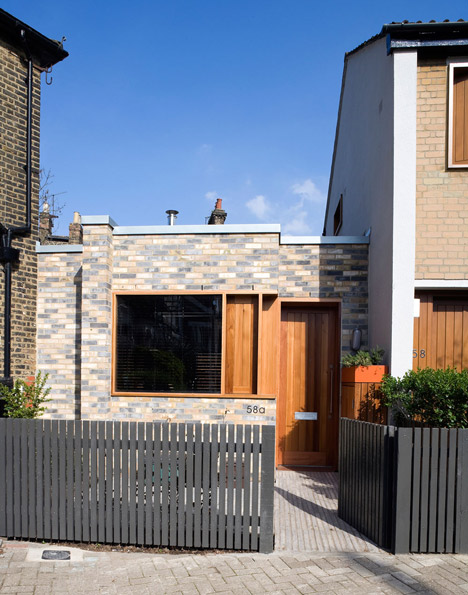
The house has been deliberately and robustly crafted; the walls are handmade brick, doors and windows are bespoke cedar with cedar cladding internally and externally. Internal joinery helps to maximise the usable space. Exposed sawn timber joists over main areas are painted grey and the ceilings to circulation and service areas are smooth and white. Main light fittings are vintage Danish. The roof is a bio-diverse green roof planted with wild flowers.
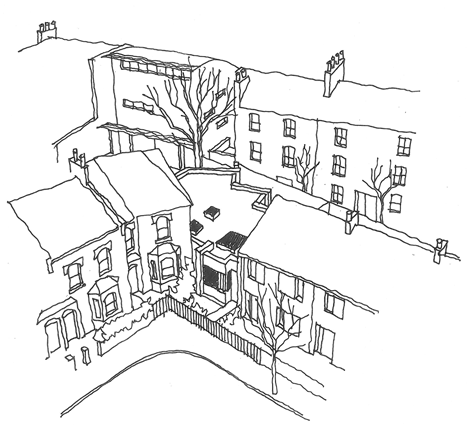
A storage basement is accessed via a ladder stair off the living room and is lined in cedar faced plywood. The house has been designed to achieve high passive standards of heating, insulation and ventilation and achieves CfSH level 4. The project was completed in January 2014.
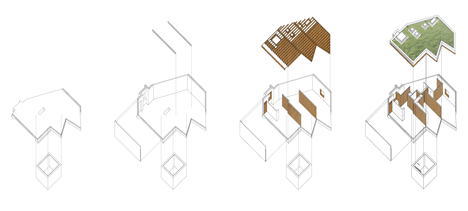
We have recently converted and refurbished the adjoining house to the south and the new building shares similar external design details. The back of the new house connects to the garden of a house we built in 2000.
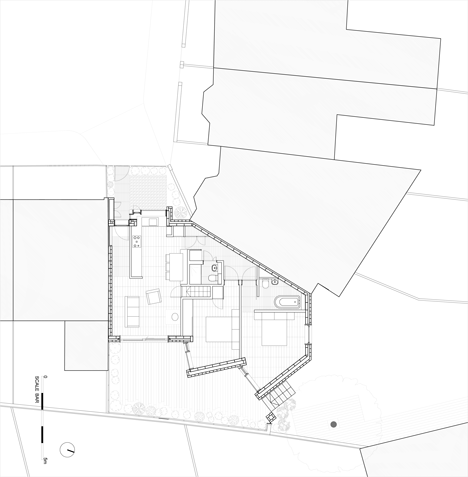
Client: Charles Thomson and Kate Blee
Architect: Studio 54 Architecture
Structural Engineer: MBP
Contractor: Fullers Builders Ltd
